First Look | The new Ibis Mojo HDR 3 in detail
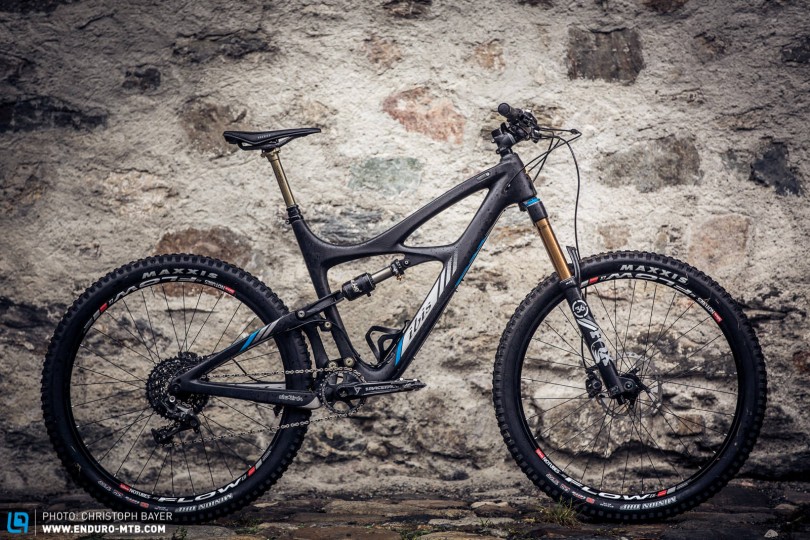
Since its introduction several years ago, the Ibis Mojo has inspired with its unique, elegant and stylish design. Over the years the geometry has become somewhat dated and so the Americans have completely reworked the bike and now present an entirely new machine with a familiar look — the Ibis Mojo HD3. We took a closer look at the third generation of the classic bike and took it for a first ride. Our first impressions and details about the bike can be found here.
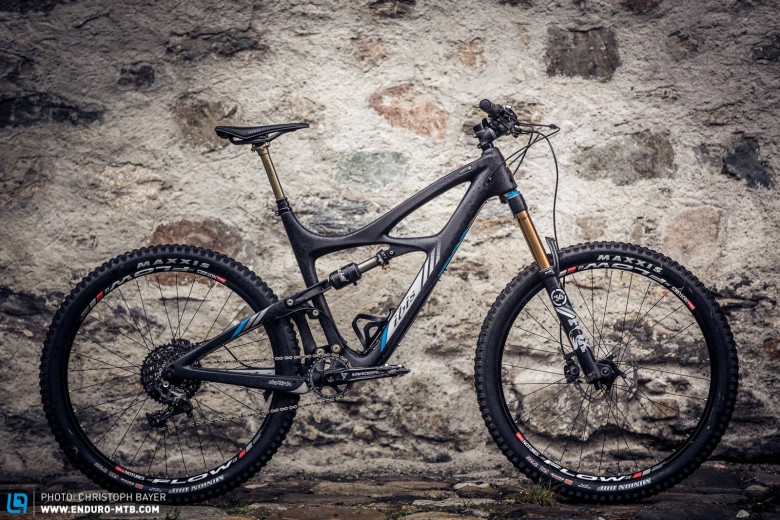
The Ibis team riders, especially Anne Caroline Chausson, have been riding the Enduro World Series races since July. At the last race of the season in Finale Ligure, Italy, we did a Bike Check and took a first look at the new machine. Final details remained a secret until today.
The bike
The best thing first: The new Mojo HD3 still looks like an Ibis. Even in the third generation the classy design, elegant lines and the DW-link rear suspension system still enthuse. However, the bike was completely re-developed and now has modern geometry as well as all current standards. This includes internal cable routing, Stealth seat post compatibility and a neat direct front derailleur mount, which can be removed if not required.
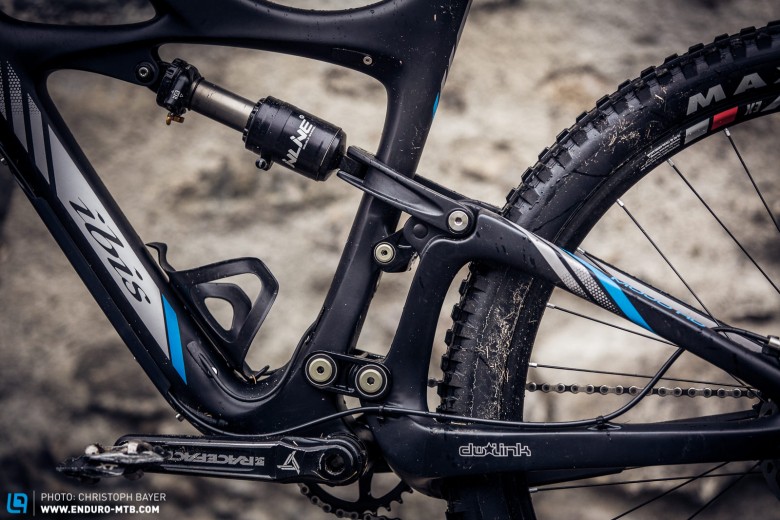
The suspension
The new Ibis Mojo HD3 has 150mm travel at the rear, which utilises the DW-link system developed by Dave Weagle. The main pivot is concentric and rotates directly at the rear wheel axle, ensuring minimal drivetrain influence on the suspension and preventing it from stiffening during braking. At the same time, thanks to the clever kinematics, the system offers a plush response to small impacts, good trail feedback and minimises bottom-outs.
Our test bike was fitted with the new Cane Creek Double Barrel Air Inline-shock as well as a Fox 36 Float fork with 160mm travel. Production bikes can also be fitted with a 150mm RockShox Pike fork and a Fox Float CTD-rear shock.


The Geometry
Longer and slacker — the new Ibis Mojo HD3 follows a development that can be observed on almost every bike. However, the Ibis isn’t nearly as extreme as some of its competitors. Ibis gave each frame size 2cm extra top tube length, a slacker head-tube angle and shorter chainstays. With a reach of 431mm in 18.5″ the bike can still be described as on the short side. The head angle of 66.6° (160 mm fork) is on the steep side.
An overview of the geometry: (with 160 mm fork)
| Size | 14,5″ | 16,5″ | 18,5″ | 20,5″ |
|---|---|---|---|---|
| Chainstays | 430mm | 430mm | 430mm | 430mm |
| Head tube angle | 66,6° | 66,6° | 66,6° | 66,6° |
| Seat tube angle | 73,6° | 73,6° | 73,6° | 73,6° |
| Bottom bracket height | 344mm | 344mm | 344mm | 344mm |
| Seat tube length | 368mm | 419mm | 470mm | 521mm |
| Reach | 411mm | 414mm | 431mm | 446mm |
| Stack | 580mm | 599mm | 610mm | 624mm |
| Wheelbase | 1135mm | 1146mm | 1168mm | 1189mm |
The spec
The Ibis Mojo HD3 will be available in eight different specs. These build from four different basic models (Shimano XT, SRAM X01, SRAM XX1 and Shimano XTR), which additionally will be available in a werx version with better suspension and wheels (Fox 36, DB-line and IBIS 741 wheels). Prices vary depending on model choice between $6,000 (XT level) and $9,200 (Shimano XTR werx). All the base models use ZTR Flow rims and Shimano brakes.
Here you can see an overview of the prices:

The parts on our test bike were not finalised but more or less correspond to the SRAM X01 spec option.
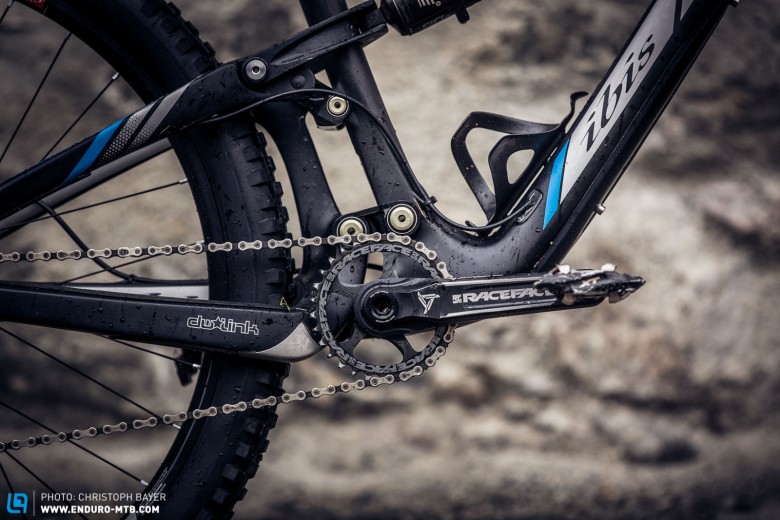
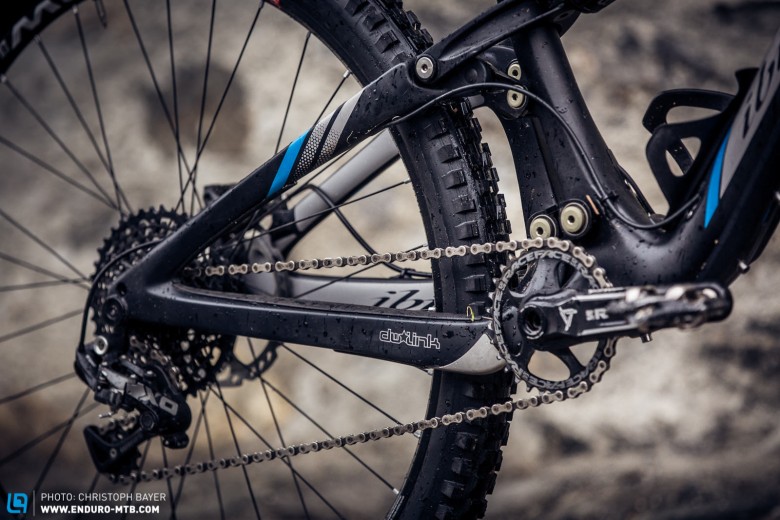
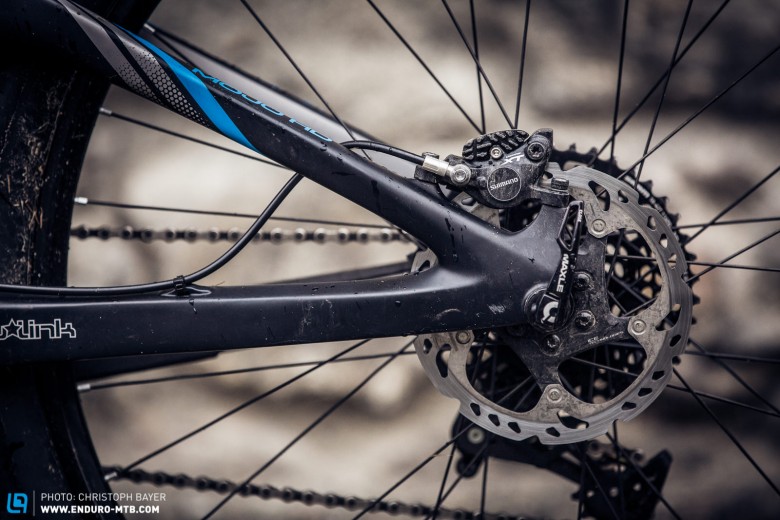

Our first ride impressions
We haven’t had a chance to give the bike a thorough test, but can’t wait to give you our first impressions. With my 180cm size I choose the 18.5″ model. The rider position is central and compact but in no way squashed. On the flat and on climbs the bike excels with its neutral rear suspension. Bob is almost impossible to provoke even with the Climb-Switch of the DB-Inline shock turned off, so we hardly used this feature. Even on steep ascents the front wheel stays planted on the ground, although we had the saddle adjusted quite far forward.
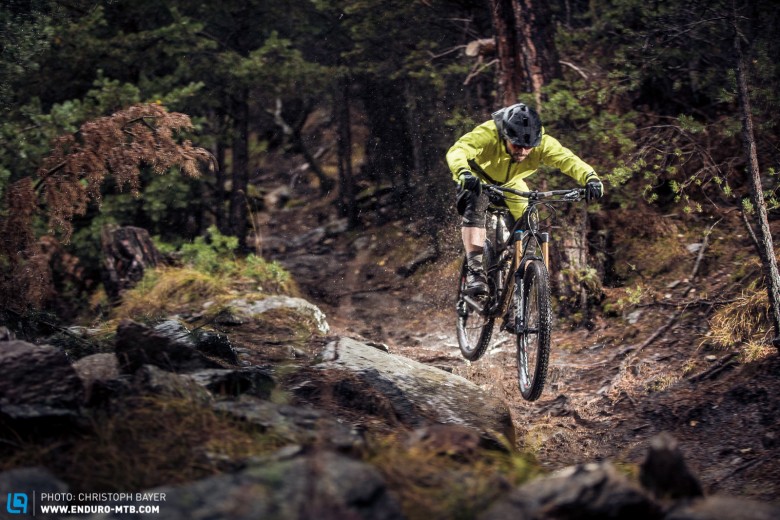
On the descents, the suspension absorbs every impact cleanly. Whilst the fork still holds some travel back, the rear end gives full travel freely without diving or bottoming out. Thanks to the 66.6° head angle and the short chainstays the bike is a real corner killer and can be playfully and precisely navigated. However, the steep head-angle and short wheelbase make the Ibis Mojo HD3 feel somewhat nervous on faster and rougher trail sections.
Conclusion
The new Ibis Mojo HD3 isn’t just a real looker, it is also a heap of fun on the trail. If you want an agile bike with great climbing in a classy design, the newest offspring from this California company is sure to make you happy. Racers, however, will still wish for an even slacker and longer geometry.
More info at: www.ibiscycles.com
Words & Pictures: Christoph Bayer
Did you enjoy this article? If so, we would be stoked if you decide to support us with a monthly contribution. By becoming a supporter of ENDURO, you will help secure a sustainable future for high-quality mountain bike journalism. Click here to learn more.








